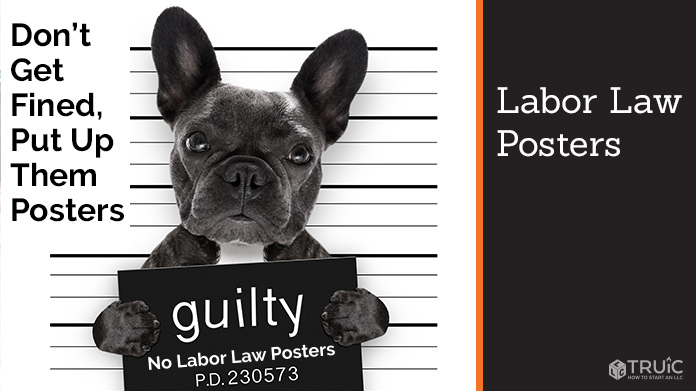Labor Law Posters
The law requires every employer in the US with one or more employees to display the latest State and Federal Labor Law Posters in the workplace. These posters contain crucial information in a clear format that your employees can read in order to understand their workplace rights and obligations.
While most organizations are required to display the same labor law posters, the specific posters that your organization needs to post may vary depending on the nature of your business. You need to display these posters in locations such as the break room where all employees can access them.

Federal and State Labor Law Posters
Labor law posters are essential tools for any organization. Both the Federal and State labor law posters serve the same goal of improving workplace productivity while reminding everyone that there are laws, requirements, and responsibilities that must be observed. Your employees have the right to know the laws pertaining to them, and that’s why you must display your posters for easy access.
It is important to note the difference between State Labor Law posters and Federal Labor Law posters in order to have a better understanding of their regulations. Required Federal Labor Law posters contain information regarding OSHA, USERRA, the Federal minimum wage, and the employee polygraph protection act. The State Labor Law posters, on the other hand, contain different regulations that are specific to the state.
Consequences for Not Posting Labor Law Posters
Both the Federal and State labor laws outline various requirements and regulations to employers. However, one of the most overlooked obligations by employers is the duty to post the relevant labor laws at the workplace. The purpose of having these posters in your workplace is to inform your employees of their rights and obligations under the applicable laws as well as how they can respond to any violations of their labor rights.
Failing to comply with the Federal and State labor law posting requirements can attract citations and heavy fines during inspections. These fines vary by poster as well as the enforcing agency, usually ranging from as low as $110 to as high as $35,000.
As an entrepreneur, you are probably aware of the tiring bureaucratic requirements that enforcing agencies impose on businesses. Thus, posting labor laws can easily be the least of your worries. You need to comply with these mandatory postings to safeguard your business from potential fines, so you can focus on more demanding aspects of your business.
How to Stay Compliant
The list of posters that you are required to display on your premises can be long depending on the nature of your business, your state, and your number of employees. Unfortunately, knowing exactly what to post and where to obtain it can be very frustrating and time-consuming. While the internet can be the best place to find these posters, you need to be wary of what you find online, even from government websites. This is because most agencies clearly outline what they require employers to post but do not mention that you may require additional posters from other agencies.
The best way to find out exactly what you need to display in your workplace is by contacting companies that specialize in labor law compliance. Most of these companies have done the research and compiled all the required notices for you in a one-in-all compilation. By seeking the services of these companies, you can avoid the time-consuming research needed to obtain these posters by yourself.
Protecting Posters from Alterations, Theft, or Defacement
Simply having the posters on your premises is never enough to safeguard your business. Some regulations, especially OSHA posting regulations and the Employee Rights Under the National Labor Relations Act poster, require that the notices are protected to prevent alterations or loss of posters.
If your poster needs to be protected by law, the poster will state at the bottom that it is an official government notice and must not be defaced. Thus, you can avoid these by laminating or displaying all of your posters in a glass enclosure. Most commercial printers also offer lamination services. If you’re printing out your own posters, you can take them to a commercial printer or a laminating service.
Download Posters for Free
Complying with labor law posting requirements is an essential component of establishing a safe, legal, and fair workplace for your employees. While these labor law posters often become afterthoughts to busy entrepreneurs, they represent a vital line of defense against fines and lawsuits.
Our website has made it easy for you to defend yourself and your employees by providing free downloadable posters. By obtaining and prominently posting updated notices, and protecting them from damage, you will maintain legal compliance and ensure that your employees are appropriately informed about their rights in the workplace.


